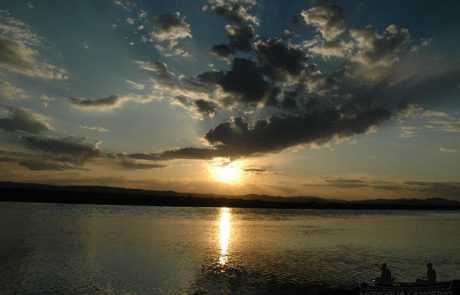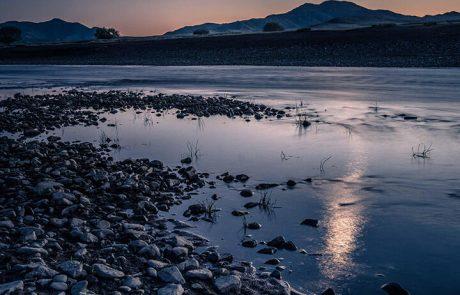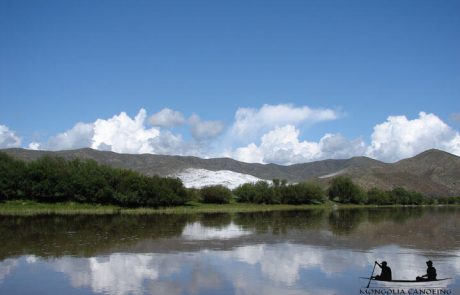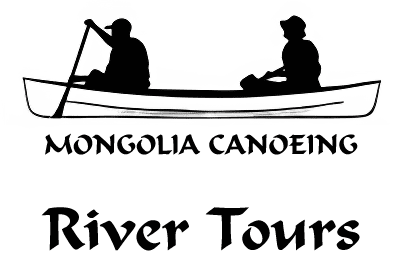Tour introduction
The section of the Orkhon river valley we´ll be visiting has been the center of all the great nomad empires in history. If you come there you´ll immediately understand why: the valley is flanked by high mountains that shield it on all sides from the winds. If you come here in the summer you´ll see immense flocks of horses, cows, sheep and goats and children will wave to you from the yurts that are never far from the river. You have indeed come to the cradle of nomad civilization and we´ll visit its most famous sight, Karakorum, the erstwhile capital of the Mongol empire founded by Chengis Khan. The canoeing is easy. No experience required and no special fitness. Just swimming capabilities. Life vests, dry sacks etc. supplied.
Difficulty: easy
Prices
- Min. group: 2 persons
- Max. group: 8 persons
- Min. price per person: 1269$
- Max. price per person: 1589$
- Single room supplement: 80$
Price includes:
- All accommodation (twin shared)
- internal transportation
- arrival & departure transfers
- meals as indicated (B-breakfast, L-lunch, D-dinner)
- sightseeing & environmental fees
- camping equipment
- dry sacks and life vests
- English speaking canoeing guide
Price excludes:
- Travel insurance
- departure taxes
- excess luggage fees on internal flights
- items of personal nature
- meals not indicated
- gratuities
Day by day itinerary (twelve days)
Day 1: Arrival in Ulaanbaatar
You will be picked up from the airport and transferred to a cozy hotel within easy walking distance of downtown. After a short briefing we explore the vibrant city of Ulaanbaatar, the Palace of the Last Mongolian Buddhist King followed by an hour of Folk Dance and Song performance. (L,D).
Day 2
Leaving Ulan Bator at nine o´clock after a seven hours drive we reach Har Horin late afternoon. We will spent the night in the comfortable yurt (a round “felt” tent, the dwelling of Mongolian Nomads). The yurt (ger in Mongolian) belongs to a touristcamp with hot showers and WC, where we also take our dinner and breakfast the next morning. (B,L,D)
Day 3
After breakfast we visit the monastery of Erdene Suu with its 118 stupas. Erdene Suu was Mongolia’s foremost center of religious worship and Buddhist learning. Its magnificent temples and art work were partly destroyed by the Communists but are now being reconstructed. In the early afternoon we explore the relics of Karakorum the capital of Chengis Khan and the center of the greatest empire the world has ever seen. After lunch we leave Har Horin. Two hours later we´ll make a short rest at another famous sight: the ruins of Khar Balgas. We see with earth covered ramparts and can still glimpse the outline of what in the seventh and eight centuries was the capital of the Uyghur empire which stretched from the chinese wall to Lake Baikal and from Manchuria to the Caspian sea.
After another two hours drive we arrive at our set-in point. (B,L,D)
Day 4 to 7
We start canoeing.
The country we´ll traverse is among the best grazing ground in all of Mongolia and the steppe teems with horses, sheep and goats. Eagles, hawks and vultures circle above and there´s a wealth of all kind of water fowl in the river.
Every once in a while we´ll witness the stampede of great herds of horses out of the river as we´re nearing them in our boats.
We´re in the very heart of central Asia and it´s readily apparent why all nomad empires from the time of the Huns 2000 years ago have been centered here in this region. There is simply no richer and more abundant pasture for the many thousand animals that accompanied the warriors of the great Khans whenever they gathered and there´s hardly a second region in Mongolia with such a proliferation of yurts many of them directly by the river side.
Often children will greet us who are bathing in the river and there will be many opportunities to drink fresh Kumiss -fermented horse milk- Mongolia’s national drink. You do as much or as little canoeing as you like – the minivan that is carrying the baggage.(B,L,D)
Day 8
After four days on the river we´ll head back. On the way we´ll stop for lunch at the Ogii Nuur, a lake renowned for its beautiful setting and the enormous numbers of birds that congregate there. After lunch we continue driving for about an hour until we reach the famous monument of Kul-Tepin. It is a huge granite stele with inscriptions commemorating the deeds of the Uigur Khans in the eight century. These inscriptions are the very first examples of Turkish writing anywhere in the world.
A hundred fifty million people speak languages related to these inscriptions through all of inner Asia but not in Mongolia. Why Uigur has died out here but expanded elsewhere is one of the unsolved riddles of world history.
After no more than half an hour we head for the famous sand dunes of Elsen Tasarhay which we reach late afternoon. These sand dunes are a geological anomaly whose appearance and plant life resembles the great Gobi desert much further south. In the evening we can take a short hike among nearby granite rocks or marvel at the contrast of the landscape which combines sand like in the Gobi, green meadows, steppe and hills with rocky outcroppings. We spent the night in a comfortable yurt, which is part of a touristcamp with hot showers and WC. (B,L,D)
Day 9
After breakfast we drive back to UB (5 hours) where you check into your hotel. In the evening we meet for a farewell dinner in an international restaurant. (B,L,D)
Day 10: Leisure day in Ulaanbaatar
This is a spare day to be spend for shopping and self-exploration. You may refer to recommendations of our team in order to make most out of it. (B).
Day 11: Departure
Transfer to airport for your return flight home. (B).
